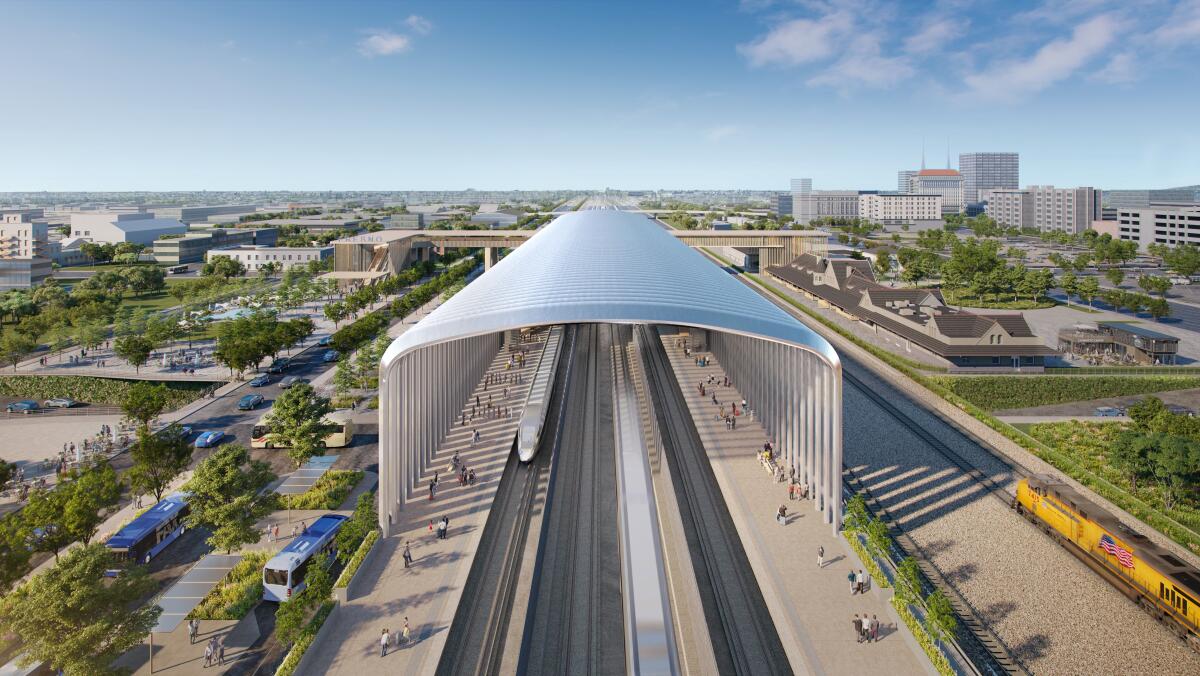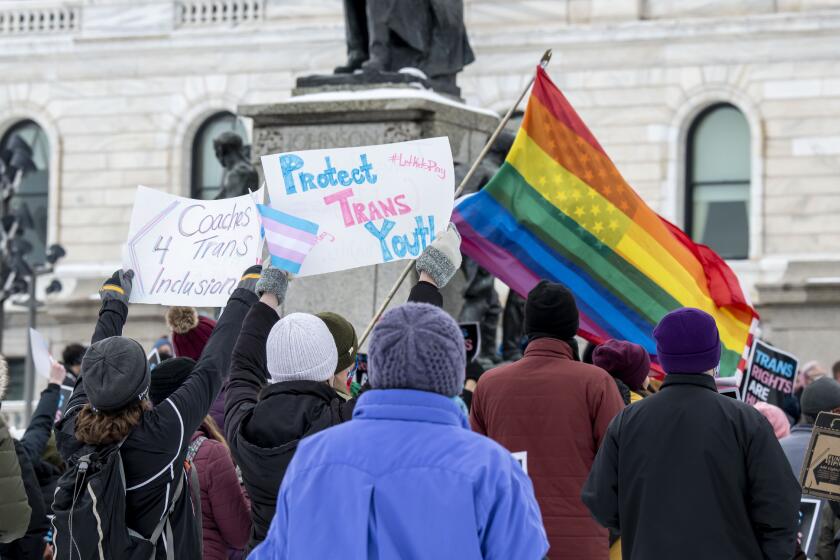Letters to the Editor: Is California’s future high-speed rail too late and too costly to be worth it?

To the editor: At this point, I don’t know whether to cry or to throw my coffee cup at the wall. (“Despite some progress, state’s high-speed rail is $100 billion short and many years from reality,” March 21.) The only part of the article that made me laugh was the comment, “Projected ridership has also dipped since the pandemic.” That’s because many of us who were looking forward to riding it will die before any part of it is completed. Instead of being able to take the high-speed train from Los Angeles to the Bay Area in December 2023, my wife and I took Amtrak round-trip from Oxnard to Martinez.
We’ve traveled between Oxnard and the Bay Area numerous times and between Hudson, N.Y., Washington, D.C., Charleston, S.C., and Charleston, W.Va., on Amtrak at various times. We’ve taken the TGV both ways between Paris and Bordeaux on several occasions. We’ve also taken the train from Vienna to Bordeaux. So, I think you can say we are among those ready, willing and able to jump on a high-speed rail between Southern California and the Bay Area.
It’s become apparent the “proposal” put to the voters in 2008 was bait-and-switch at its most extreme. It put the cost at $9.95 billion with a projected completion date of 2020. Given that voters could expect some increase in cost and delay in completion ... well, now completion of the Central Valley segment is estimated for sometime between 2030 and 2033 at an estimated cost of $35 billion. And how much can that cost increase in the next six to nine years?
As much as it pains me to say it, I feel the project should be scrapped — or at least stopped until an independent and accurate assessment can be made of its projected cost and reasonable completion date.
John Snyder, Newbury Park
..
To the editor: The Times has a history of being critical of mass transit projects or any alternatives to California’s car-dependent culture. Just look back at all the negative articles the paper wrote about the building of the city’s first subway system. The latest headline about high-speed rail is just another example of the shortsighted bias of the paper.
Around the world, in locations where high-speed rail has been built, study after study has shown the huge societal benefits of those systems. Most of these high-speed networks faced huge problems and cost overruns while they were being built. But in nearly every case, those issues were quickly forgotten after people stepped aboard a train that reduced travel times, cut pollution levels and efficiently connected cities.
We can’t keep building freeways and adding more car lanes to solve our transit problems. High-speed rail is a critical infrastructure project that will help California meets its climate goals, while connecting the state in a way that will make it even more competitive in the global economy.
It’s time for The Times to begin championing the thousands of jobs that high-speed rail has already created and the billions of dollars of economic activity that the project continues to contribute to the state’s economy. The Times might even try supporting the idea of spending more now to complete the system faster. Not only would that save billions in the long run, but we would also see the huge economic benefits of the system much sooner.
Donald Flaherty Fajardo, Los Angeles
..
To the editor: The Times reports the high-speed rail train will require another $135 billion to be completed. This project has moved from being a mistake, to a fiasco, to a crime scene. Construction was started before the train’s route was approved and before funding was secured, and as of today the route and funding are still not established. Louis Thompson, rail peer-review chair, must put a stop to the insanity.
If our tax coffers have $135 billion it would be far wiser to clean up our cities and get the thousands of people experiencing homelessness the healthcare and safe housing they need. The streets of L.A. and our other urban centers need to be secure for all of us.
Society would be far better served by this alternative.
James Regan, Carlsbad
More to Read
A cure for the common opinion
Get thought-provoking perspectives with our weekly newsletter.
You may occasionally receive promotional content from the Los Angeles Times.










